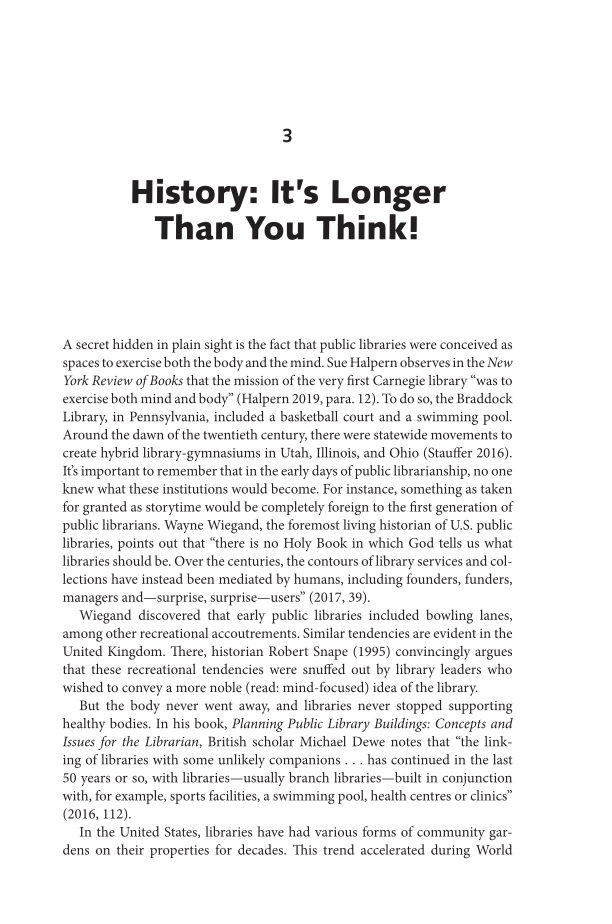3 History: It’s Longer Than You Think! A secret hidden in plain sight is the fact that public libraries were conceived as spaces to exercise both the body and the mind. Sue Halpern observes in the New York Review of Books that the mission of the very first Carnegie library “was to exercise both mind and body” (Halpern 2019, para. 12). To do so, the Braddock Library, in Pennsylvania, included a basketball court and a swimming pool. Around the dawn of the twentieth century, there were statewide movements to create hybrid library-gymnasiums in Utah, Illinois, and Ohio (Stauffer 2016). It’s important to remember that in the early days of public librarianship, no one knew what these institutions would become. For instance, something as taken for granted as storytime would be completely foreign to the first generation of public librarians. Wayne Wiegand, the foremost living historian of U.S. public libraries, points out that “there is no Holy Book in which God tells us what libraries should be. Over the centuries, the contours of library services and col- lections have instead been mediated by humans, including founders, funders, managers and—surprise, surprise—users” (2017, 39). Wiegand discovered that early public libraries included bowling lanes, among other recreational accoutrements. Similar tendencies are evident in the United Kingdom. There, historian Robert Snape (1995) convincingly argues that these recreational tendencies were snuffed out by library leaders who wished to convey a more noble (read: mind-focused) idea of the library. But the body never went away, and libraries never stopped supporting healthy bodies. In his book, Planning Public Library Buildings: Concepts and Issues for the Librarian, British scholar Michael Dewe notes that “the link- ing of libraries with some unlikely companions . . . has continued in the last 50 years or so, with libraries—usually branch libraries—built in conjunction with, for example, sports facilities, a swimming pool, health centres or clinics” (2016, 112). In the United States, libraries have had various forms of community gar- dens on their properties for decades. This trend accelerated during World
Document Details My Account Print multiple pages
Print
You have printed 0 times in the last 24 hours.
Your print count will reset on at .
You may print 0 more time(s) before then.
You may print a maximum of 0 pages at a time.










































































































































































































































